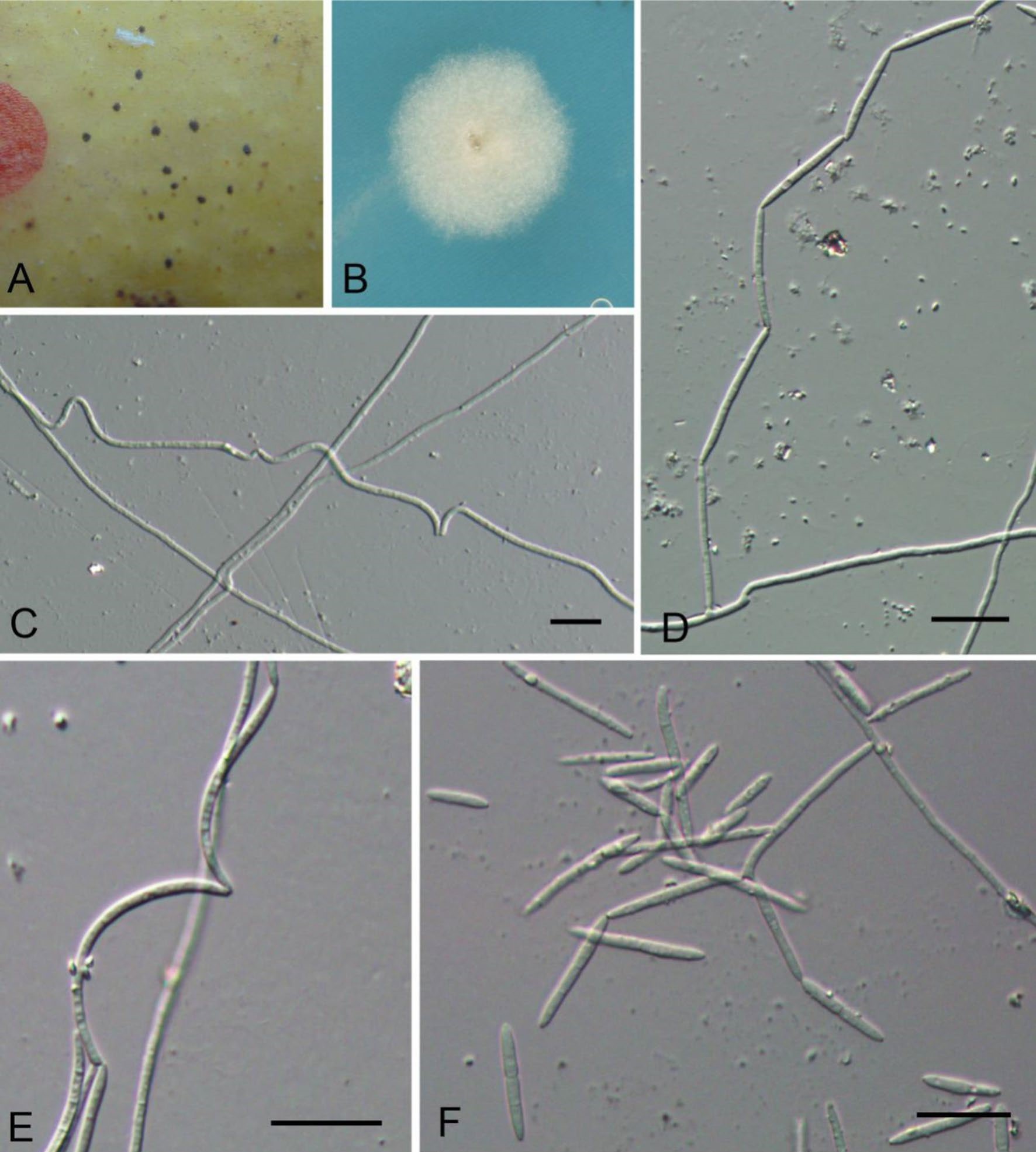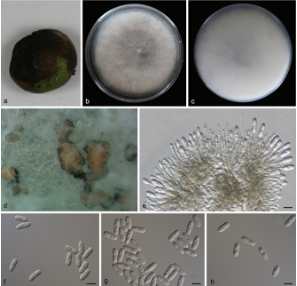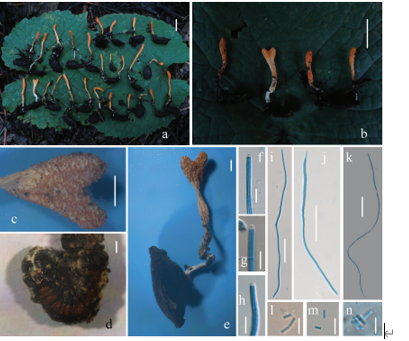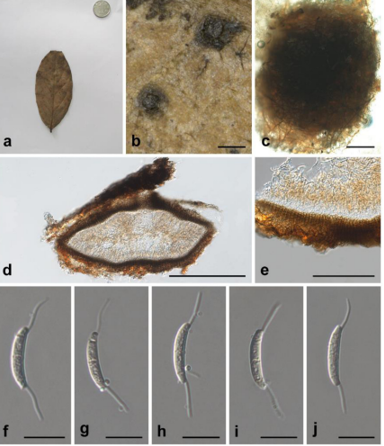Scleroramularia vermispora G.Y. Sun & L. Gao 2020
Index Fungorum number: IF556172; Facesoffungi number: FoF 05788
Holotype: CHINA, Guangdong Province, Zhanjiang, on the surface of Musa basjoo fruit, October 2011, L. Gao, W.H. Li & H.C. Chen, GLZJXJ6 (GLZJXJ6, holotype).
Morphological description
Sexual morph: Undetermined. Asexual morph on SNA. Mycelium creeping, superficial and submerged, consisting of hyaline, smooth, branched, septate, 1.5–2.5 μm diam hyphae. Conidiophores mostly reduced to conidiogenous cells, or with one supporting cell. Conidiogenous cells solitary, erect, intercalary on hyphae, subcylindrical, straight, with 1 terminal locus, 2–7 × 1.5–3 μm. Conidia in branched chains, hyaline, smooth, straight, curved, and usually bending into a “C” shape or vermiform if long and thin; basal conidia mostly narrowly cylindrical, 0–3-septate, 23–57 × 1.5–2.5 μm; intercalary and terminal conidia becoming more narrowly ellipsoid to vermiform, 0–4-septate, 11–34(–43) × 1.5–3 μm.
Culture characteristics: Colonies after 2 weeks at 25 °C on SNA spreading with sparse aerial mycelium and somewhat feathery margin, reaching 15 mm diam, with white surface.
Habitat: On the surface of Musa basjoo fruit.
Distribution: In China.
GenBank Accession: ITS: MK454748; TEF1: MK454977.
Notes: The phylogenetic tree based on a combined ITS and TEF1 sequence dataset shows that Scleroramularia vermispora branches separately from the other species in the genus with full support (Fig. 33). The conidia of S. vermispora are long and thin, usually bending into a “C” shape or vermiform.
Reference: Hai‑Sheng Yuan1,2· Xu Lu1,2 · Yu‑Cheng Dai3 ·

Scleroramularia vermispora (HMUABO GLZJXJ6, holotype). a Flyspeck signs on banana peel. b Colony on synthetic nutrient-poor agar (SNA) after 2 weeks. c vermiform conidia. d Chains of c onidia. e “C” type conidia. f Chains of conidia with branch. Scale bars: c–f = 20 µm.









